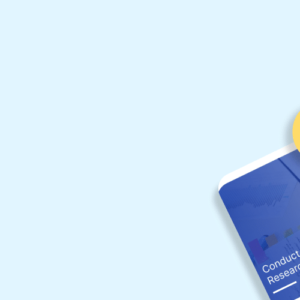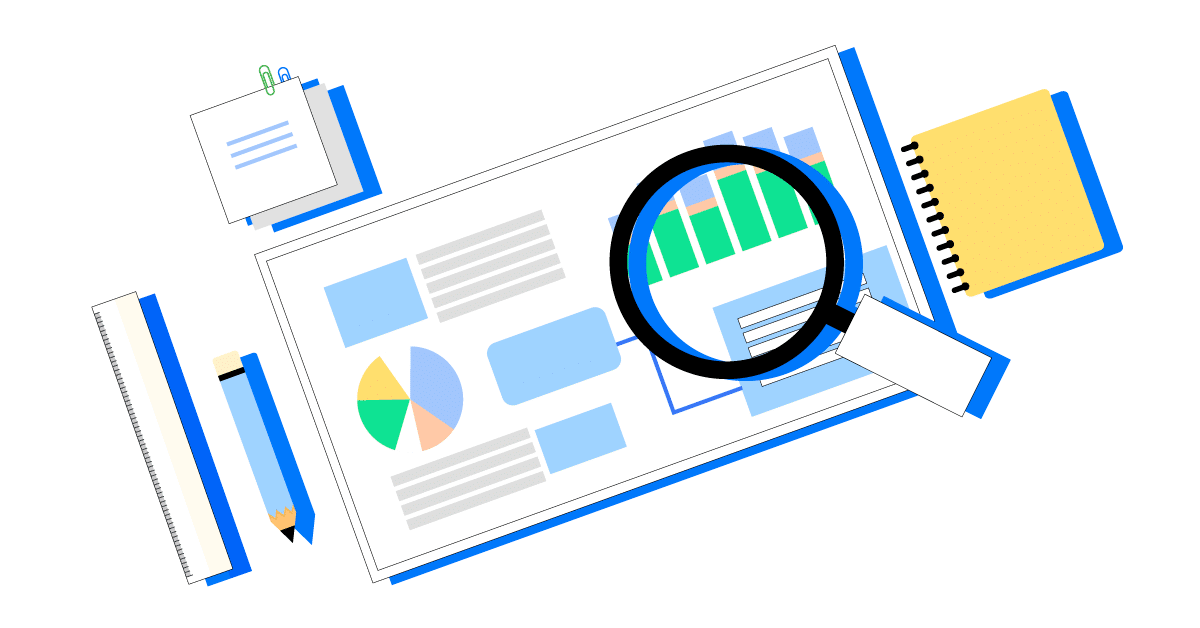
Descriptive Research Design
Descriptive Research Design Voxco’s Descriptive Research guide helps uncover the how, when, what, and where questions in a research problem Download Free Descriptive Research Guide

Find the best survey software for you!
(Along with a checklist to compare platforms)
Take a peek at our powerful survey features to design surveys that scale discoveries.
Explore Voxco
Need to map Voxco’s features & offerings? We can help!
Find the best customer experience platform
Uncover customer pain points, analyze feedback and run successful CX programs with the best CX platform for your team.

We’ve been avid users of the Voxco platform now for over 20 years. It gives us the flexibility to routinely enhance our survey toolkit and provides our clients with a more robust dataset and story to tell their clients.
Steve Male
VP Innovation & Strategic Partnerships, The Logit Group
Explore Regional Offices

Find the best survey software for you!
(Along with a checklist to compare platforms)
Take a peek at our powerful survey features to design surveys that scale discoveries.
Explore Voxco
Need to map Voxco’s features & offerings? We can help!
Find the best customer experience platform
Uncover customer pain points, analyze feedback and run successful CX programs with the best CX platform for your team.

We’ve been avid users of the Voxco platform now for over 20 years. It gives us the flexibility to routinely enhance our survey toolkit and provides our clients with a more robust dataset and story to tell their clients.
Steve Male
VP Innovation & Strategic Partnerships, The Logit Group
Explore Regional Offices

Find the best survey software for you!
(Along with a checklist to compare platforms)
Take a peek at our powerful survey features to design surveys that scale discoveries.
Explore Voxco
Need to map Voxco’s features & offerings? We can help!
Find the best customer experience platform
Uncover customer pain points, analyze feedback and run successful CX programs with the best CX platform for your team.

We’ve been avid users of the Voxco platform now for over 20 years. It gives us the flexibility to routinely enhance our survey toolkit and provides our clients with a more robust dataset and story to tell their clients.
Steve Male
VP Innovation & Strategic Partnerships, The Logit Group
Explore Regional Offices
SHARE THE ARTICLE ON

Acquiescence bias is a common issue in surveys resulting in misleading data. The bias occurs when respondents tend to agree with your survey question regardless of their beliefs or experiences.
Accurate and reliable data is the core of conducting market research, seeking customer satisfaction insights, or gathering employee feedback. However, acquiescence responses can severely impact the survey result. The data can lead to a skewed understanding of the survey topic and may impact your decision-making ability. Fortunately, there are ways to prevent this bias and obtain more insightful survey responses.
In this blog, we’ll dive into some effective strategies to prevent acquiescence bias in the survey and learn what causes it.
Acquiescence bias, also known as yes bias or agreement bias, implies the tendency of individuals to agree with something regardless of their honest feelings or beliefs.
In survey research, it is a type of response bias. In this bias, the respondent agrees with your survey statement/question rather than sharing their true, unbiased, and personal view. This tendency presents a problem as it leads to poorly generated survey results.
Most commonly, you will see this phenomenon when you ask survey respondents to confirm a statement or present them with choices like agree/disagree, yes/no, or true/false.
If a respondent has acquiescence bias, they will answer “yes” or in favor of the statement regardless of the importance of the statement. This leads to poor data quality and accuracy concerns. Poor data can lead to misinformation and result in decisions made based on inaccurate data.
Acquiescence survey questions are characterized by questions that invite survey respondents to agree or disagree with positive or negative statements.
❎ Here are some examples of acquiescence questions:
Respondents may tend to agree with these questions without giving much thought to the answer, which makes these good acquiescence bias examples.
To avoid gathering acquiescence responses, you should carefully craft questions that use neutral language.
✅ Let’s see some examples of how you can rephrase the acquiescence questions above to help avoid bias.
By rephrasing questions in a more neutral tone, you can minimize the likelihood of gathering acquiescence responses.
The goal of conducting a survey is to gather accurate, honest, and reliable data from the target audience. However, acquiescence bias tends to skew the result and lead to misinformation.
We have explained seven ways you can prevent acquiescence bias in survey research.
Different demographic backgrounds can lead to this type of bias. So, it’s important to be conscious of the different demography of your target audience when conducting international surveys.
When conducting surveys with participants all over the world, it’s best to think about who you should include in the survey and where they are from. This will help you ensure that your questions are well-targeted to the right demography of the respondents.
Creating a target demographic or being conscious of the different demography gives you an accurate result in the context of the respondents’ backgrounds. You will collect diverse responses reflecting distinct perceptions.
This will help you effectively analyze the survey data as you can evaluate the result with the knowledge of the respondents’ background. Leverage survey software that gives you access to a diverse research panel to create a sample of your target demography.
Leading questions influence respondents to respond in favor of the statement. Instead of asking survey respondents to agree or disagree with a statement, give them a broader and neutral range of options that reflect their true feelings.
Rephrase your question by using neutral language and tone. Also, reformulate the response options to offer options that are well-balanced and neutral.
Instead of → Do you agree or disagree with the statement: I am extremely satisfied with the product options.
Strongly Disagree | Disagree | Neutral | Agree | Strongly Agree |
Use this → How satisfied or dissatisfied are you with the product options?
Very dissatisfied | Dissatisfied | Somewhat dissatisfied | Neither satisfied nor dissatisfied | Somewhat satisfied | Satisfied | Very satisfied |
Giving respondents the option to rate how they feel helps gather more nuanced results. It encourages participants to share their honest feeling or view on the subject matter and tells them that you recognize their feeling.
Using ambiguous words or phrases will confuse respondents leading to an acquiescent response set. When writing survey questions, you should be well aware of what each question implies and how respondents may interpret it.
The clear and intentional language will make sure that respondents don’t get confused or frustrated and try to rush through the survey. When your questions reflect the message clearly, respondents won’t have to think a lot and will offer accurate responses.
Make sure your questions emulate the context of the question to avoid bias. The question and answer option should reflect the context clearly to encourage them to respond thoughtfully and truthfully.
The shorter the survey, the lesser the survey fatigue and the lesser the acquiescence bias. Short surveys encourage respondents not to rush through the survey and honestly consider each question.
A long survey will drive respondents to answer positively and complete the survey, especially if there is a survey reward. Short surveys that take only 3 to 5 minutes will encourage respondents to be more honest in their responses.
When respondents don’t find a response option that reflects their feeling, they are likely to select a positive response. Open-ended questions, however, enable respondents to be more honest and share their true feelings and opinion without limitation.
Open-ended questions are convenient as it doesn’t limit respondents. It, therefore, removes the chance of a respondent selecting an answer that is inaccurate and reduces an acquiescent response set. Leverage survey software that enables you to add open-ended questions in your survey along with closed-ended questions and performs easy analysis.
There are different types of survey analysis tools available to analyze the two types of data. Let’s look at the analysis tools that state-of-the-art survey software such as Voxco offers.
Statistical analysis functionalities analyze quantitative or numerical data. The tool uses statistical models and algorithms to find patterns and identify relationships between the variables. There are many different statistical analytics types, such as cross tabs, factor analysis, linear regressions, and more.
This tool helps you make sense of qualitative or textual data. The tool uses NLP (natural language processing) algorithms to convert textual data into computer language, so it’s easy to identify patterns and themes and uncover hidden insights.
Sentiment analysis is also a part of the text analysis tool. This tool enables you to identify the emotion behind a respondent’s feedback.
While this tool doesn’t help you analyze the data, it plays a critical role in understanding the data. This tool creates a visual representation of the findings using charts, graphs, and tables to help you understand the insights quickly.
This online survey analysis tool helps generate customizable reports to provide an overview of the findings. The tool enables you to use interactive filters to create data views on data subsets and bring your data to life. This provides an easy view of the survey insights, which helps users make informed decisions.
Depending on the need of your research, some tools may be more advantageous to you than others. Let’s say you gather a large amount of qualitative data; you will benefit from using text and sentiment analysis tools. In conclusion, the type of tool you need depends on the type of survey data you gather.
See trends with cross-tabs. Uncover behavioral patterns with segmentation. Visualize insightful data with charts.
As a researcher, you can’t let your biased perception influence the respondents. Respondents know that as a researcher, you must have preferred responses, however, it shouldn’t reflect in your survey design.
Be mindful of being neutral in the language you use in online surveys. You should also be sensitive of your position when conducting in-person interviews. Avoid asking participants to share their opinion on emotional beliefs. The respondent may feel cornered and respond in a way that they assume you would prefer.
If you must ask sensitive questions or require their opinion on emotional beliefs, try different data collection methods and use neutral and non-alarming language.
The best way to encourage honest responses and minimize acquiescence bias is by letting respondents know their identity will remain anonymous. In surveys where the subject matter is considered to be socially taboo, respondents may feel anxious and offer agreeable answers. In those cases, anonymous surveys might make them feel more comfortable to offer their honest opinion.
Let your survey respondents know that the survey will remain completely anonymous, and the responses will be evaluated on an aggregate level to generate authentic responses.
It can be tricky to try to remove acquiescence bias entirely from the survey. That’s because it is not always possible to identify what can drive acquiescence response in your survey. However, there are several common causes that you can keep in mind to prevent the bias, if not remove it entirely.
When answering surveys, participants often create an ideal version of themselves and respond from the perception of that ideal self. This is different from selecting a response under the influence of a socially agreeable response or research bias.
In this phenomenon, the respondents give answers that live up to their own image of the ideal self. They create this personal for themselves and set a self-expectation. For example, if a person identifies themselves as an extrovert might have a hard time agreeing to a statement like “I often stay in during weekends.” Their self-expectations will make them reluctant to offer an honest response.
Some respondents are inclined to be agreeable. They don’t want to offer a negative response in order not to disappoint the research. This behavior may stem from politeness, or it can be a cultural influence.
Some respondents even refuse to offer negative responses for fear of being seen as narrow-minded. To prevent this from resulting in acquiescence bias, it’s best to let people know that sometimes negative responses are also OK.
When you are surveying respondents’ behavior or place in society, they often think about the “expected response.” In cases, for example, when you ask them to agree/disagree about a socially popular statement, respondents are likely to select an answer which appears more agreeable to the social norm. This results in acquiescence bias.
People don’t want to select an answer that may reflect on them poorly, especially if the researcher can trace it back to them. For example, respondents are likely to agree to the statement “We need to ban single-use plastic,” even if they may still use single-use plastic in reality. In this case, the data is inaccurate and misleading.
Meet respondents where they are and drive survey completion.
The respondent’s country or culture plays a major role in their upbringing, which may also impact how they answer survey questions. For example, people without much education tend to give acquiescence responses.
Respondents are likely to respond in a way they are used to in life. Factors such as corruption levels and collectivism often result in acquiescence bias.
The survey’s length, the type of questions, the order of questions, response options, etc., often influence a participant’s response. For example, if the survey question is ambiguous or if the response options appeal more to a positive emotion, respondents are likely to offer an acquiescence response.
Researchers can have a huge impact on the survey response. Whether it is a self-administered survey or an in-person interview, researchers’ influence can lead to acquiescence bias.
In an interview, the demeanor of the researcher can unintentionally encourage a respondent. They may assume that the interviewer holds a certain view. This influences the respondents to give answers agreeable to the interviewer.
Whereas, in online surveys, the tone and language used in the question can result in an acquiescent response set.
✔ 500+ global brands in 40+ countries
✔ 100Mn+ annual surveys
Voxco’s advanced survey software offers you a wide range of question type that enables you to design engaging surveys to encourage thoughtful responses from participants. You can design and administer surveys via email, SMS, or website.
Additionally, the online survey tools allow you to tailor your surveys with skip logic and branching and randomized question orders to prevent acquiescence bias. Voxco also offers survey templates that ensure that the questions are phrased to minimize bias.
In conclusion, acquiescence bias is a prevalent problem in survey research as it leads to unreliable data and misinformation. Preventing bias requires effective planning, and by adopting the strategies mentioned in the blog, you can minimize the impact of the acquiescence response.

Descriptive Research Design Voxco’s Descriptive Research guide helps uncover the how, when, what, and where questions in a research problem Download Free Descriptive Research Guide

Cross Sectional Study: The Science Behind the Moment Try a free Voxco Online sample survey! Unlock your Sample Survey SHARE THE ARTICLE ON Table of

Competitive Benchmarking Framework See what question types are possible with a sample survey! Try a Sample Survey Competitive benchmarking helps a brand know where they
Customer Satisfaction SHARE THE ARTICLE ON Table of Contents Customer satisfaction is the chief focal point of an association since customers drive business. Gathering customer
Customer Retention Rate(CRR): Introduction, Calculation, Great Customer, and Ways to Boost SHARE THE ARTICLE ON Share on facebook Share on twitter Share on linkedin Table

Case Study: Stratégir SHARE THE ARTICLE ON Voxco Multimode- a growth enabler in Stratégir’s data collection & 3D product testing. Stratégir uses Voxco Multimode to
We use cookies in our website to give you the best browsing experience and to tailor advertising. By continuing to use our website, you give us consent to the use of cookies. Read More
| Name | Domain | Purpose | Expiry | Type |
|---|---|---|---|---|
| hubspotutk | www.voxco.com | HubSpot functional cookie. | 1 year | HTTP |
| lhc_dir_locale | amplifyreach.com | --- | 52 years | --- |
| lhc_dirclass | amplifyreach.com | --- | 52 years | --- |
| Name | Domain | Purpose | Expiry | Type |
|---|---|---|---|---|
| _fbp | www.voxco.com | Facebook Pixel advertising first-party cookie | 3 months | HTTP |
| __hstc | www.voxco.com | Hubspot marketing platform cookie. | 1 year | HTTP |
| __hssrc | www.voxco.com | Hubspot marketing platform cookie. | 52 years | HTTP |
| __hssc | www.voxco.com | Hubspot marketing platform cookie. | Session | HTTP |
| Name | Domain | Purpose | Expiry | Type |
|---|---|---|---|---|
| _gid | www.voxco.com | Google Universal Analytics short-time unique user tracking identifier. | 1 days | HTTP |
| MUID | bing.com | Microsoft User Identifier tracking cookie used by Bing Ads. | 1 year | HTTP |
| MR | bat.bing.com | Microsoft User Identifier tracking cookie used by Bing Ads. | 7 days | HTTP |
| IDE | doubleclick.net | Google advertising cookie used for user tracking and ad targeting purposes. | 2 years | HTTP |
| _vwo_uuid_v2 | www.voxco.com | Generic Visual Website Optimizer (VWO) user tracking cookie. | 1 year | HTTP |
| _vis_opt_s | www.voxco.com | Generic Visual Website Optimizer (VWO) user tracking cookie that detects if the user is new or returning to a particular campaign. | 3 months | HTTP |
| _vis_opt_test_cookie | www.voxco.com | A session (temporary) cookie used by Generic Visual Website Optimizer (VWO) to detect if the cookies are enabled on the browser of the user or not. | 52 years | HTTP |
| _ga | www.voxco.com | Google Universal Analytics long-time unique user tracking identifier. | 2 years | HTTP |
| _uetsid | www.voxco.com | Microsoft Bing Ads Universal Event Tracking (UET) tracking cookie. | 1 days | HTTP |
| vuid | vimeo.com | Vimeo tracking cookie | 2 years | HTTP |
| Name | Domain | Purpose | Expiry | Type |
|---|---|---|---|---|
| __cf_bm | hubspot.com | Generic CloudFlare functional cookie. | Session | HTTP |
| Name | Domain | Purpose | Expiry | Type |
|---|---|---|---|---|
| _gcl_au | www.voxco.com | --- | 3 months | --- |
| _gat_gtag_UA_3262734_1 | www.voxco.com | --- | Session | --- |
| _clck | www.voxco.com | --- | 1 year | --- |
| _ga_HNFQQ528PZ | www.voxco.com | --- | 2 years | --- |
| _clsk | www.voxco.com | --- | 1 days | --- |
| visitor_id18452 | pardot.com | --- | 10 years | --- |
| visitor_id18452-hash | pardot.com | --- | 10 years | --- |
| lpv18452 | pi.pardot.com | --- | Session | --- |
| lhc_per | www.voxco.com | --- | 6 months | --- |
| _uetvid | www.voxco.com | --- | 1 year | --- |